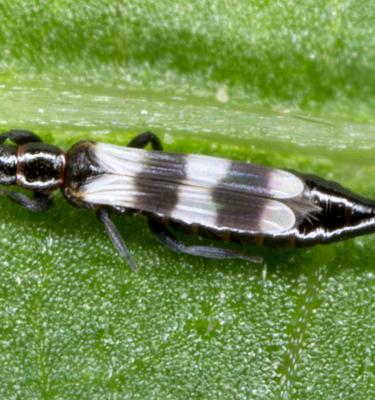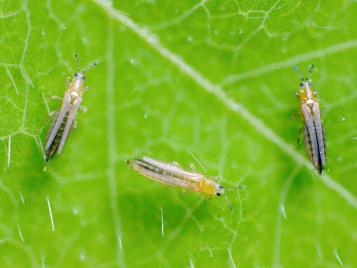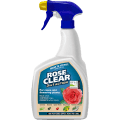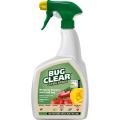

How to Identify, Treat & Control Thrips
Thrips, also known as thunder flies and thunder bugs, are very small insects, and although they look innocuous, they can cause a lot of damage to plants. The name thrips is both singular and plural: there is no such word as ‘thrip’!
Thrips belong to the Thysanoptera group of insects and there are numerous species of thrips, some of which feed outside on the sap of ornamental plants like gladioli or on crops like peas. Thrips on houseplants or in the greenhouse are also common. Some species of thrips spread plant viruses on their mouthparts.
Thrips eggs are very tiny and are laid on young leaves or in flower buds. In the garden thrips usually have two or three generations a year but sometimes more during hot summers. In the greenhouse, thrips may continue to breed all year. Outdoor thrips overwinter as adults or immature ‘nymphs’, in the soil or concealed on a host plant such as Viburnum tinus.
How to identify thrips
Thrips have thin, cigar-shaped bodies about 1-2mm long with two pairs of wings fringed with hairs. Most thrips are black, sometimes with white areas on their wings making them look banded. In the immature stage of the thrips life cycle they are yellow and wingless. These ‘nymphs’, like adult thrips, feed on sap, often from the upper surface of leaves.

Thrips damage
Typical thrips damage is found on the upper surface of leaves which look mottled and silvery. Different types of thrips attack different plants. Here are a few examples you might come across of thrips on plants.
- Glasshouse thrips cause a silvery discolouration of upper leaf surfaces with small brown spots. They occur in heated glasshouses throughout the year.
- Banded palm thrips on Monstera leaves and other houseplants like Schefflera or citrus plants create a silvery-brown effect.
- Gladiolus thrips: in mid to late summer thrips on the leaves of gladioli cause pale mottling with tiny black specks.
- Pea thrips: the pods develop silvery-brown scarring, with seeds only at the stalk end of the pod.
- Privet thrips affect privet and lilac leaves, making them dull green then silvery-brown.
- Western flower thrips can damage the flowers of house plants and greenhouse plants, with petals developing pale flecking. Plants affected include African violets, streptocarpus, pelargoniums and busy Lizzies. Tomato and cucumber plants can be hosts for these thrips.
- Onion thrips cause whitish mottling on the foliage. This thrips also feeds on many other garden plants like chrysanthemum, begonia and cyclamen, where it silvers the leaves. By feeding at the tips of dahlia shoots it stunts growth and distorts leaves.
- Honeysuckle thrips are active in the summer and often turn the leaves silvery-brown, particularly where the plant is growing in a warm sheltered place such as against a wall.
Thrips treatment and control
Here are a few suggestions for thrips control, ranging from cultural and biological to chemical:
- Most established outdoor shrubs cannot be destroyed by glasshouse thrips, even if in some seasons they cause extensive silvery mottling, so no action need be taken.
- How to get rid of thrips on pot plants or inside the house? Thrips are so small that it can be difficult to control them by physical means, but you can try wiping them off the plant with a damp cloth or sponge.
- Hang sticky traps in the greenhouse to trap thrips and to act as an early warning system that thrips might be present. These are not recommended for use outside as they might harm beneficial insects.
- Use a biological control to control thrips in greenhouses, based on several species of a predatory mite. This is available from some biological control suppliers.
- Another method of thrips treatment for ornamental plants is to spray affected plants with a contact insecticide which as its name suggests, kills only the insect pests it comes into contact with. A systemic insecticide also kills on contact but is then also absorbed inside the plant, and moves around the plant, providing protection against further attack for up to three or more weeks.
Before you treat thrips on fruit and vegetables, always check that the insecticide is approved for use on edible crops. To protect bees and pollinating insects do not apply to plants when in flower. Do not use where bees are actively foraging. Do not apply when flowering weeds are present.
How to prevent thrips
- Keep a look out. From spring onwards, check plants for evidence of damage by thrips so you can take action before the population gets too large to treat.
- Shop carefully. When you buy houseplants, check the flowers and avoid any with pale flecking on the petals as this is a sign that thrips might be present.
- Protect gladiolus corms over winter. Store corms in a cool frost-free place. This prevents overwintering thrips from feeding on the corms.













